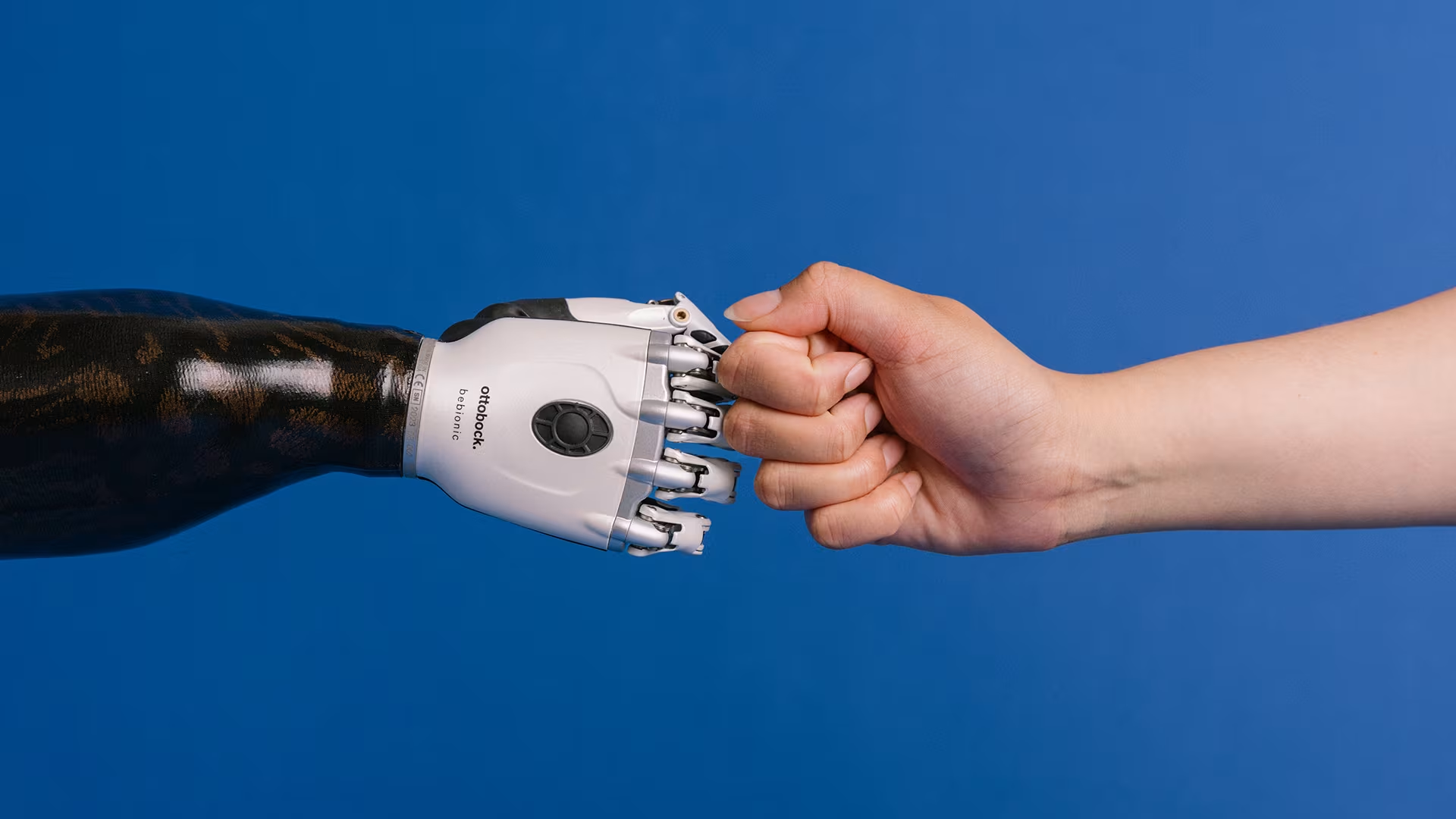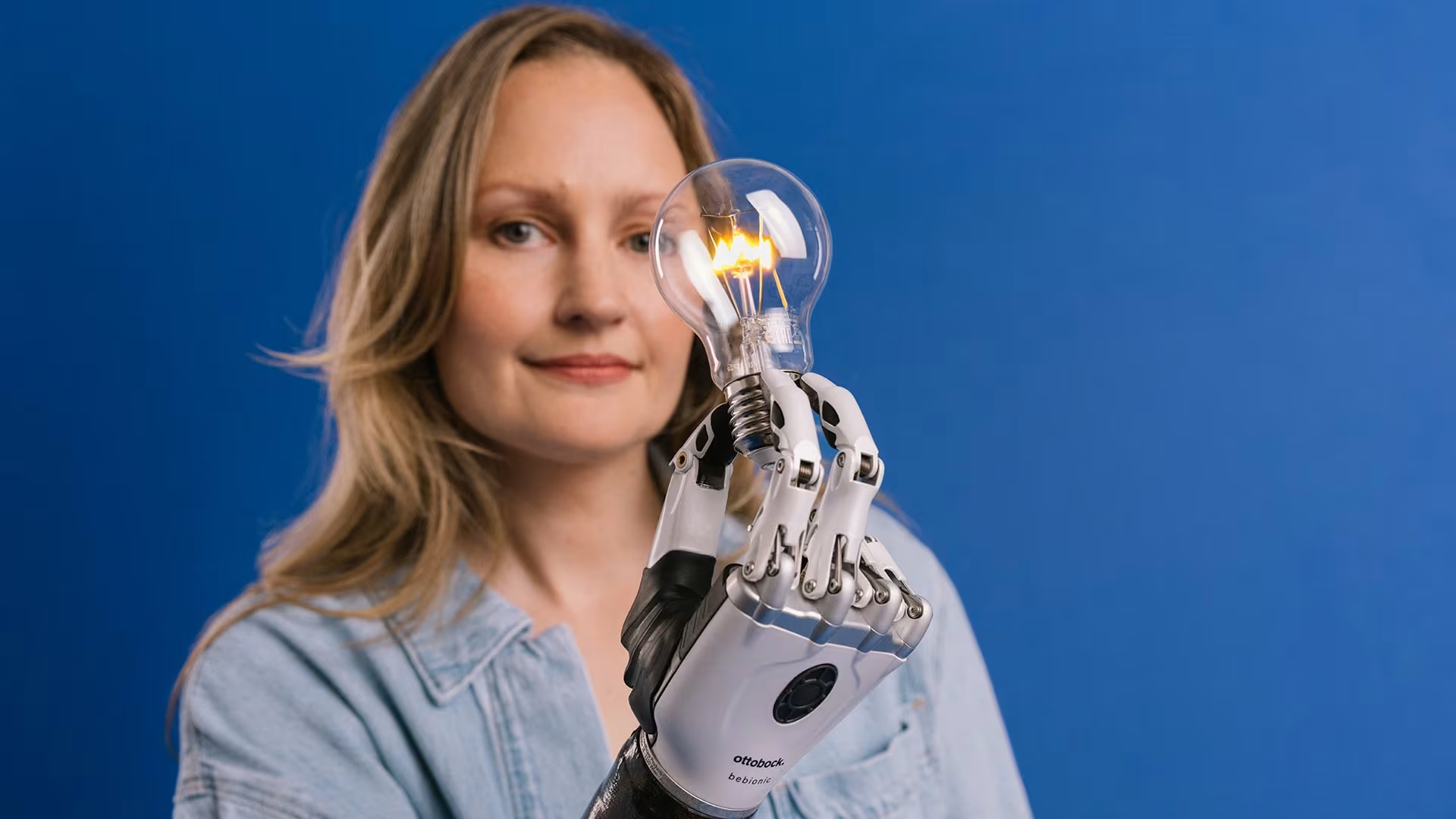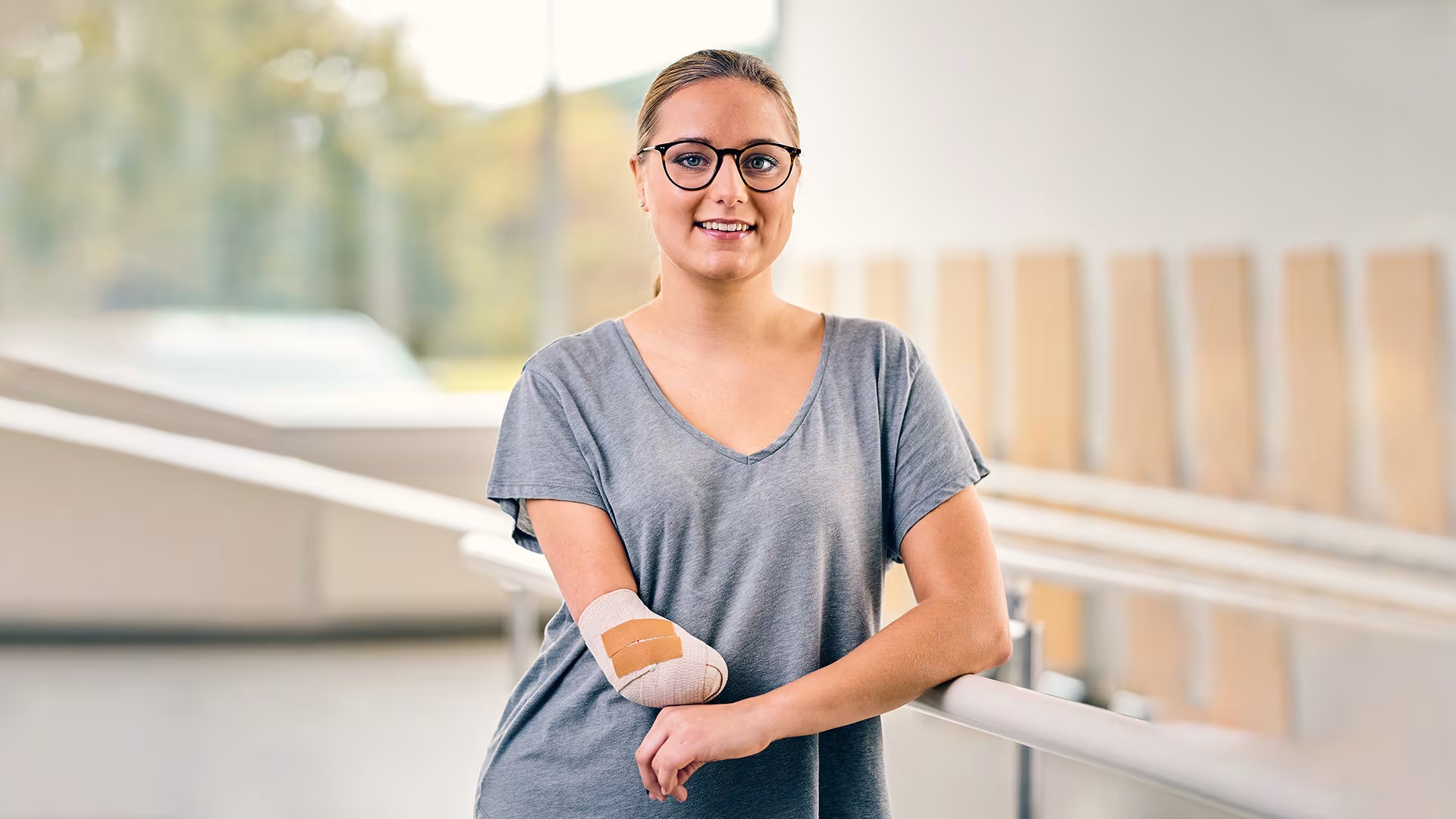


Ashleigh's bebionic Story
From Determination to Innovation: Ashleigh's Journey with Limb Difference and the bebionic Hand.
Mother of two, Ashleigh was born with limb difference, with her left arm ending just below the elbow. She was just two months old when she received her first prosthesis, a cosmetic arm. Around the age of three she was fitted with what she fondly refers to as her "crocodile arm," a body powered prosthetic arm that used a harness around her shoulder to open and close the hand making a snapping motion, giving it its nickname.
She became one of the youngest users of a myoelectric arm, which allowed her to open and close the hand using her muscle impulses and meant she no longer required a harness around her shoulder. Her new myoelectric arm allowed her to perform tasks like cutting up her own food, fostering a sense of independence at an early age. Despite this, Ashleigh never saw herself as having a disability, even without a prosthesis. Her parents were instrumental in fostering this mindset, never forcing her to wear a prosthetic but always encouraging her to try new things and reminding her that her limb difference didn’t have to hold her back.
As she grew older, Ashleigh developed a fierce determination to prove anyone wrong who doubted her abilities. She recalls difficult moments at school when she felt different from others, but with the support of her family, she learned to focus on her strengths rather than her differences. By the time she started school, Ashleigh was tying her shoelaces, something the hospital had helped her learn, and her resilience showed through in her hobbies such as swimming, biking, rollerblading, and running, to name a few.
As Ashleigh grew, her prostheses evolved with her. She rarely wore cosmetic arms, especially at school, preferring the functionality of the single grip myoelectric hands. However, after her family moved from Yorkshire to the South of England in 2001, she began struggling with ill-fitting sockets. The issues with her sockets stopped her from using a prosthetic arm for nearly two decades, relying only on a cosmetic arm for driving. Yet she missed the practical benefits of a myoelectric hand.
The birth of her two children motivated Ashleigh to return to using a prosthetic arm. Pushing a stroller proved difficult with one arm, and she realized how much she had been straining her body by over-relying on her right arm. “I realised that not using a prosthesis was taking a toll on my body. My back was hurting from overcompensating with my right arm,” explains Ashleigh.
Ashleigh decided to transfer her care to Portsmouth hospital. Here, she was provided with a new, well-fitted socket, and she returned to using her myoelectric arm full-time. It had been 20 years since she’d used such a prosthesis, but Ashleigh’s muscle memory kicked in quickly. She was soon back to performing daily tasks, feeling the benefits not just in her abilities but also in her posture. When her clinic mentioned the bebionic hand, she was intrigued. She was able to trial the hand for ten minutes and even in such a short time Ashleigh could see the new prospects of using a multi grip hand for the first time. The bebionic hand has 14 different grips and hand positions. The individual motors in each finger allows the user to precisely control the hand and grasp objects in a natural, coordinated way making it the most lifelike prosthetic hand on the market.
After her brief trial, Ashleigh went back to her single grip myoelectric arm and waited for the bebionic to become available through the NHS. In late 2022, NHS England introduced the Multi-Grip Hand Policy. This new policy supports the use of multi-grip hands for adults and children with upper limb amputation or congenital limb difference. In December 2023, Ashleigh received a demo bebionic unit to trial, and by January 2024, she had her own bebionic with wrist rotator. Ashleigh chose a matt black finish and paired it with a sleek black glove. “I love its appearance!” enthused Ashleigh, “I’ve never been concerned with trying to hide my prosthesis which is why I went for the black colour, and the glove gives me excellent grip.”
“The first month of using the bebionic I was so tired, there was a lot to learn to get the most out of the hand and I found it mentally exhausting, but then something clicked and I was able to control the hand without putting in as much effort,” Ashleigh reflected. Her efforts paid off and her journey with the bebionic hand has been transformative, her care team in Portsmouth are also thrilled with her progress. “The experience of using a single grip myoelectric arm as a child has given me a solid understanding of how prosthetics work. I think this has helped me fully harness the potential of the bebionic hand.”
Ashleigh is using her bebionic daily, from preparing meals and cutting food to typing, a skill she’s only now been able to perform thanks to her new hand. In addition to her office job, Ashleigh also runs her own sewing business which is flourishing. The bebionic has made a world of difference as Ashleigh is able to hold fabric in place using the hand while she creates patchwork blankets.
Her motto is simple yet powerful: “If you tell me I can’t do something, I’ll prove you wrong. Or I’ll at least try too!”
What’s Ashleigh’s advice for anyone starting with their first multi-grip hand: “Don’t put too much pressure on yourself to get it perfect right away. Going from a myoelectric hand to a multi-grip one is a big change. It takes time, but progress will come. You’re not failing—just keep pushing forward. You've come this far, so hang in there a little longer.”

Available via NHS Funding

Discover the bebionic

Living with an arm amputation
3 results out of 3